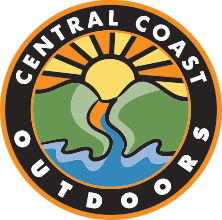Land Acknowledgement
The Yak Tityu Tityu Yak Tilhini (Northern Chumash) people and the Te'po'ta'ahl (Salinan) people have lived on the land in and around Morro Bay for countless generations before Europeans arrived in the late 1700s, and they still live here today. Prior to Spanish contact and settlement, both these peoples fished, hunted and foraged, making use of the abundant resources along the coast and inland areas of what is now San Luis Obispo County, while at the same time living a spiritual life in harmony with the land and waters. Although Europeans may have considered these peoples backward and in need of civilizing, the native peoples of the area already had a sophisticated culture replete with commerce, trade routes, currency, artistic expression, music, and exquisite craftsmanship with the ability to make a great variety of tools, tule rush homes and greatly admired baskets. The Chumash people also built ocean going canoes called tomols and had many settlements on what are now known as the Channel Islands off the coast of Santa Barbara. Due to plentiful resources and a mild climate, it is estimated that prior to European contact the coastal California area had one of the highest population densities in all of North America, with numerous tribes and many hundreds of villages.
Arrival of the Spanish in the late 1700s to coastal California was a disaster for the native peoples. Many factors contributed to the decline of indigenous cultures. Native peoples had no natural immunities to European diseases, such as smallpox, that were unwittingly carried into their homelands. Native lands were stolen and native people were herded onto Spanish missions. There they were forced to practice European style agriculture and huge numbers died of disease and famine. By the mid to late 1800s when Americans settled in the area, the remaining tribal people were often hunted and killed while authorities looked the other way or often condoned the violence outright.
Through all this the Yak Tityu Tityu Yak Tilhini and Te'po'ta'ahl peoples have survived and still live here today, often keeping their traditional practices alive as well as conducting ceremonies. Morro Rock is called Le'samu by the Salinan people and Lisamu by the Northern Chumash people and is considered a sacred site by both peoples. Although the general public is not allowed to climb on Morro Rock, traditional ceremonies have recently taken place on Morro Rock during the solstice. The recently designated Chumash Heritage National Marine Sanctuary off our coast was championed by the Northern Chumash Tribal Council for years and is named appropriately.
We are grateful for the stewardship of the Yak Tityu Tityu Yak Tilhini and Te'po'ta'ahl peoples over this beautiful land and encourge everyone to honor them and learn more:
https://www.yttnorthernchumash.org/
https://chumashsanctuary.org/sacred-sites/

